The Story of Culture and Arts
- Image resource of Korean history
- Documents from History TextBooks
- Culture & Art Stories from Korean History
- Culture & Art Stories from Korean History - Korean
- National Institute of Korean History
- History net
- About the site
- Introduce
-
Numerous topics related to Korean culture and art are mentioned in middle and high school national history textbooks, but most of them are briefly described by era, making it difficult to understand their concepts, transition processes, and characteristics.
<Culture & Art Stories from Korean History> produces and provides video materials based on expert commentary on the flow, change process, characteristics and characteristics of each major topic in the field of culture and art in Korean history.

Scenario
In the late Joseon of the 18th century, a ground-breaking new city was built after thorough planning. That new city was Suwon’s Hwaseong Fortress.
A place of creative architectural beauty but also commercial and military functionality.
Let’s look at the new Joseon city that King Jeongjo imagined, Suwon’s Hwaseong Fortress.
A Battle Station
The history of Hwaseong Fortress began when King Jeongjo desired to move the tomb of his father, Prince Sado, to old Suwon Town and so ordered its residents to move to a new place below Paldalsan Mountain.
“It is said that the governor of Suwon, Jo Sim-tae, has paid the households residing near the marked tomb site to leave.” - Ilseongnok (Records of Daily Reflections), July 20, 1789
King Jeongjo planned for the new Suwon city to be an economic powerhouse and to have its own local government office, Confucian school, and temporary palace for royal visits. All moving expenses of the displaced were paid and the commercial activities of newcomers were encouraged with financial support. As a result, within five years of the new city’s foundation, it could boast over a thousand homes.
He also built the Hwaseong Fortress to surround and protect the city. Hwaseong Fortress was designed to be a residential city and combat fortress that could serve both defensive and offensive roles.
There were a total of 48 offensive and defensive installations built at 100-meter intervals along the perimeter of the fortress wall.
There are brick barbicans at the north, south, east, and west gates. Beside the north and south gates are jeokdae, guard platforms for surveying and attacking enemy forces.
To facilitate an effective attack, there is a poru, tower for firing artillery, nodae, for firing the mechanical crossbow, and the 3-story brick gongsimdon tower that allowed those within to gaze outward and attack.
The gangnu watchtower and posa sentry post were also used to monitor enemy movements, while the jangdae tower was used for commanding troops. Every part of the fortress wall was actively used, yet also a structural work of art.
A City of Industry and Commerce
Suwon Hwaseong Fortress, built in the tradition of a fort town, or eupseong, which dates back to the early Joseon period, was also designed to fulfil its role as a commercial city. To maintain the city’s infrastructure, a stream was dredged and intersecting roads were constructed.
Commercial facilities were also placed along main boulevards, as the king planned for his people to engage in all manners of commercial activity in the city.
[Epilogue]
A new economic city in line with the development of commerce in the late Joseon period. Suwon Hwaseong Fortress, equipped with state-of-the-art defensive and offensive facilities for its time. King Jeongjo’s dream of an ideal new city still lives on thanks to the many efforts of subsequent generations.
-------------------------------------
Advisor: Cho Jaemo
Script/Storyboard: Kwak Ki-yeon
Editor: Jung Jungnam, Myung Jaerim, Seo Myungwon
Narrator: Mary Katherine Chadwick
Filming: Yoon Suwon
General Editing: Park Injoon, Lee Seungsin
Illustrations: Kim Jongseok, Shim Hui-young
Recording/Music: Jo Donghyo
Logo: Min Seung-ook
Materials/Resources: Korea Heritage Service, Korean Heritage Agency, K-Heritage Channel, National Palace Museum, National Library of Korea, National Museum of Korea, Kyujanggak Institute for Korean Studies, Seoul National University, Suwon Hwaseong Office, Suwon Hwaseong Museum, Korea National University of Cultural Heritage Interactive Digital Heritage Lab
English Translation & Editing: Mary Katherine Chadwick, Daniel Kane, Lee Jaeyeol
Production Manager: Yoon Jongwon, Kim Kiwon
Administration: Kim Sanghee
Director: Shin Jeonghwa
Architecture
17 films-
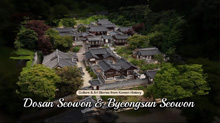 Dosan Seowon & Byeongsan Seowon03:56
Dosan Seowon & Byeongsan Seowon03:56 -
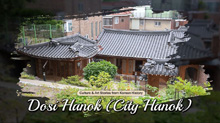 Dosi Hanok (City Hanok)03:51
Dosi Hanok (City Hanok)03:51 -
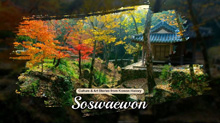 Soswaewon03:43
Soswaewon03:43 -
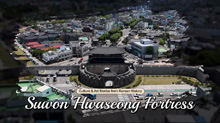 Suwon Hwaseong Fortress03:57
Suwon Hwaseong Fortress03:57 -
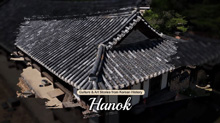 Hanok06:40
Hanok06:40 -
 Fortresses - walled towns in Korea09:15
Fortresses - walled towns in Korea09:15 -
 Joseon Palaces08:46
Joseon Palaces08:46 -
 Korean Gardens08:34
Korean Gardens08:34 -
 Jongmyo, the Royal Shrine of Traditional Korea09:05
Jongmyo, the Royal Shrine of Traditional Korea09:05 -
 Seokbinggo, or Stone Ice Storage08:18
Seokbinggo, or Stone Ice Storage08:18 -
 Seowon, a Neo-Confucian Academy08:22
Seowon, a Neo-Confucian Academy08:22 -
 Buddhist Temple Architecture08:28
Buddhist Temple Architecture08:28 -
 Fortresses of Korea09:12
Fortresses of Korea09:12 -
 Stone Pagodas07:13
Stone Pagodas07:13 -
 Tombs09:36
Tombs09:36 -
 Capital Cities and Royal Palaces08:55
Capital Cities and Royal Palaces08:55 -
 Roof Tiles07:48
Roof Tiles07:48

